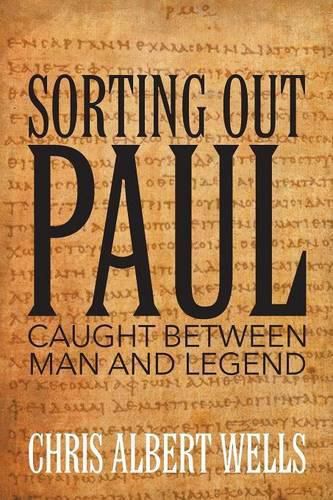Readings Newsletter
Become a Readings Member to make your shopping experience even easier.
Sign in or sign up for free!
You’re not far away from qualifying for FREE standard shipping within Australia
You’ve qualified for FREE standard shipping within Australia
The cart is loading…






This title is printed to order. This book may have been self-published. If so, we cannot guarantee the quality of the content. In the main most books will have gone through the editing process however some may not. We therefore suggest that you be aware of this before ordering this book. If in doubt check either the author or publisher’s details as we are unable to accept any returns unless they are faulty. Please contact us if you have any questions.
This book provides the basis for revising early Roman church history. The second-century confrontations that structured the church were symbolized by Peter, representing the church’s initial Judean legacies, and by Paul signifying the Hellenistic theology. Paul is a key actor whose role cannot be correctly understood without separating the first-century man from his second-century legend. Historical Paul brought to Gentiles a new salvation promise in the name of Jesus, Son of Israel’s Creator God. Legendary Paul belonged to a Christianity that radically departed from the original matrix. Paul posthumously became an apostle to the second-century Hellenistic heretics under Marcion’s guidance who rejected the Messiah’s Judean legacy. The centrist Christian group, challenged by Marcion, used Peter’s primacy to defend their cause. Winning an important political battle, centrists created a wide anti-heretical front and established the church’s primary Judean orthodoxy. Paul losing the keys to Peter but finally occupying a third of the New Testament resumes the agitated history of the early Roman Church. It comprises an initial layer of Judean-influenced orthodoxy Paul rejected as the least of the apostles, completed by a second layer of Hellenistic-inspired orthodoxy, Paul rehabilitated. The continuing confrontations between Peter and Paul produced important texts, influenced the Gospels, made the church evolve, and falsified church history by introducing traditions that still confuse Christians. Understanding the political battles involved in establishing the Roman Church will help in reading all the texts that went into the Christian Bible with their conflicting ideals. Publisher’s website: http: //sbprabooks.com/ChrisAlbertWells
$9.00 standard shipping within Australia
FREE standard shipping within Australia for orders over $100.00
Express & International shipping calculated at checkout
This title is printed to order. This book may have been self-published. If so, we cannot guarantee the quality of the content. In the main most books will have gone through the editing process however some may not. We therefore suggest that you be aware of this before ordering this book. If in doubt check either the author or publisher’s details as we are unable to accept any returns unless they are faulty. Please contact us if you have any questions.
This book provides the basis for revising early Roman church history. The second-century confrontations that structured the church were symbolized by Peter, representing the church’s initial Judean legacies, and by Paul signifying the Hellenistic theology. Paul is a key actor whose role cannot be correctly understood without separating the first-century man from his second-century legend. Historical Paul brought to Gentiles a new salvation promise in the name of Jesus, Son of Israel’s Creator God. Legendary Paul belonged to a Christianity that radically departed from the original matrix. Paul posthumously became an apostle to the second-century Hellenistic heretics under Marcion’s guidance who rejected the Messiah’s Judean legacy. The centrist Christian group, challenged by Marcion, used Peter’s primacy to defend their cause. Winning an important political battle, centrists created a wide anti-heretical front and established the church’s primary Judean orthodoxy. Paul losing the keys to Peter but finally occupying a third of the New Testament resumes the agitated history of the early Roman Church. It comprises an initial layer of Judean-influenced orthodoxy Paul rejected as the least of the apostles, completed by a second layer of Hellenistic-inspired orthodoxy, Paul rehabilitated. The continuing confrontations between Peter and Paul produced important texts, influenced the Gospels, made the church evolve, and falsified church history by introducing traditions that still confuse Christians. Understanding the political battles involved in establishing the Roman Church will help in reading all the texts that went into the Christian Bible with their conflicting ideals. Publisher’s website: http: //sbprabooks.com/ChrisAlbertWells